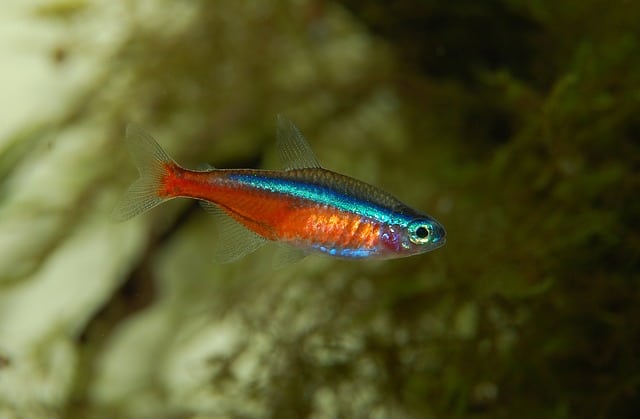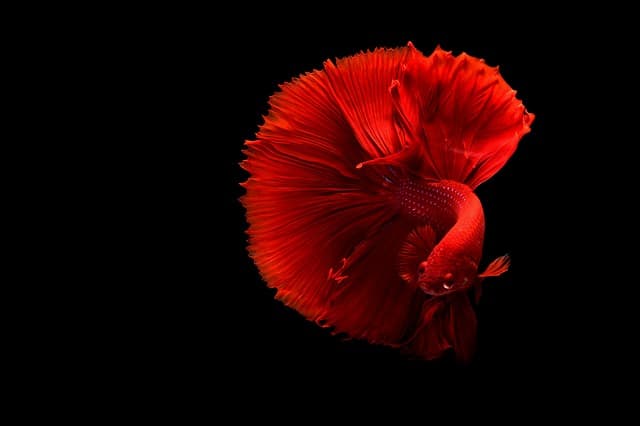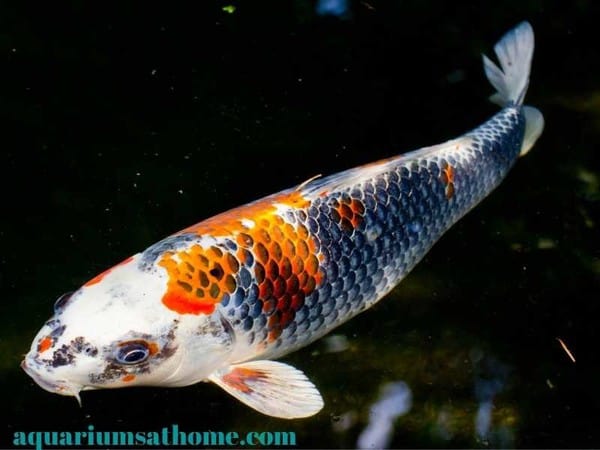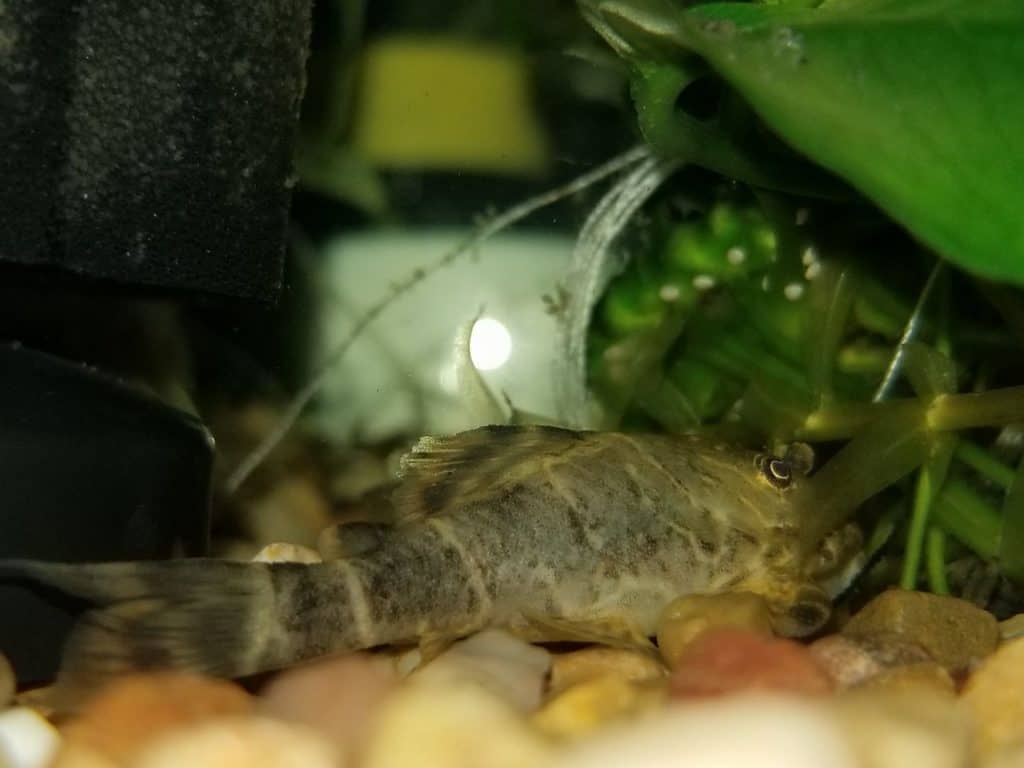German blue rams are a species of freshwater fish that are found in river basins near Venezuela and Colombia in South America. They’re a type of dwarf cichlid fish and as such, aren’t the hardiest nor ideal for beginner aquarium hobbyists. Should you decide to purchase blue rams, you may be wondering if they need to be kept in pairs? Well, the answer is…
Yes, German blue rams should be kept in male/female pairs in a minimum 30-gallon tank with 10 more gallons of water per every additional pair of fish. They form monogamous relationships and ‘mate for life’ as adults which is why it’s best to purchase them in pairs while still juveniles – so they can bond before reaching sexually maturity.
Now that you know it’s best to keep German blue rams in pairs, let’s explore this topic further. I’ll explain why they need others of their kind in a captive environment, whether or not they can be kept with other species of cichlid fish, and which aquatic creatures make the best tankmates. I’ll also discuss what water parameters they prefer, where to purchase them, and how often pairs will mate in captivity.
So, if you’re ready to learn more about German blue rams and their need to live in pairs in a community tank environment, then let’s get stared!
How Many German Blue Rams Can be Kept Together?
As mentioned above, German blue rams like to be kept in pairs in an aquarium. Depending on the size of your tank, you can have a single pair in a 30-gallon aquarium or multiple pairs in larger tanks. The rule-of-thumb is at least 10 extra gallons of water for every additional pair. Bigger is always better though when it comes tank size for German blue rams.
Unlike most species of cichlid fish, German blue rams are generally peaceful in nature and get along well with other fish in a community tank environment. Males can become somewhat aggressive during the mating season – in an effort to protect their mates and/or offspring. Ensuring your tank is large enough with plenty of hiding places for cover should help keep tension levels at bay.
Can German Blue Rams Live Alone?
While German blue rams prefer to be kept in male/female pairs, you can keep just one in a smaller 15-gallon tank. Choose a female instead of a male if you only want a single ram and intend to keep it with other fish. Be aware that without a partner, German Blue rams won’t be as brilliant or vibrantly colored since their pigmentation is directly tied to their ‘happiness’ or well-being.
Can You Keep Multiple German Blue Males in the Same Tank?
Its entirely possible to keep more than one German blue ram male in the same tank, provided the aquarium is large enough (at least a 40-gallon size, but preferably bigger) for each one to have his own area. If not, they’ll become territorial and fight each other for space. You must also be sure to have plenty of hiding places in the tank so they can retreat when necessary.
Where is the Best Place to Buy Paired German Blue Rams?
You can often buy ‘paired’ German blue rams at your local pet shop of fish store. The idea to get a male and female that are still young and have been kept together in the same tank. That way, they’re already accustomed to one another and may bond quicker. If possible, try to avoid purchasing male and female German blue rams online or from separate retail locations.
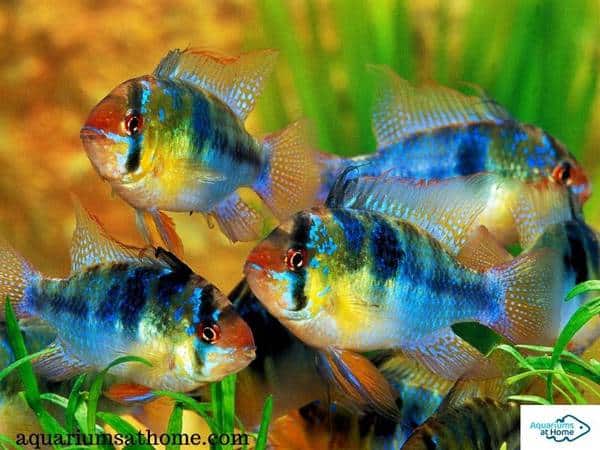
Can German Blue Rams be Kept with Other Cichlids?
German Blue rams are quite docile and can be kept with other dwarf cichlids including apistogtrammas, nannacaras, and mikrogeophagus’. The idea is to keep them with fish of like-temperament that are also endemic to South America and require similar water conditions when in captivity.
Do not mix South American cichlids like German blue rams with African cichlids such as amphilophus’ malawis or oscars, for example, as these species are highly aggressive and territorial in nature. As well, African cichlids have specific water parameters which aren’t conducive to cichlids from South America.
Can Angelfish Live with German Blue Rams?
Angelfish (another type of South American cichlid) can live peacefully with German blue rams as long as the tank is big enough for each species to have its own area. If the aquarium isn’t at least 40-gallons or larger in size, chances are angelfish and German blue rams will become aggressive and territorial, even ‘fighting’ each other for space!
What are the Best Tankmates for German Blue Rams?
The best tankmates for German blue rams are other peaceful dwarf cichlid species like apistogtrammas, nannacaras, and mikrogeophagus’. Female betta fish, cardinal and/or neon tetras, danios, discus fish, dwarf gouramis, killifish, plecostomous catfish, and silver dollars also make good companions for German blue rams, not to mention cories, guppies, mollies, platies, and kuhli and/or clown loaches.
Will German Blue Rams in an Aquarium Mate Frequently?
Since German blue rams are ‘happier’ and healthier when kept together in pairs in a community tank, you can expect them to mate as often as once or even twice per month! They reach sexual maturity at a relatively young age – between 4 and 6 months old – and will continue to breed with the same mating partner for the rest of their lives.
German blue rams practice biparental brood care, with both parents working together to care for the eggs as well as guard the breeding territory. While it’s not common for them to eat their offspring, it can happen the first few times when the pair is just beginning to mate. If it continues to happen, then it’s likely the result of distress within the aquarium environment.
What Size Tank Do You Need for German Blue Rams?
When it comes to tank size for German blue rams (not unliked most other cichlid fish species in a captive environment), bigger is always better. As mentioned above, a pair of rams should be kept in a 30-gallon tank at the very least, especially if they’re in a community tank.
For every additional pair of German blue rams, you should add an extra 10 gallons of water. With multiple males sharing the same tank, make sure you have sufficient space for them to swim about freely. Males will become territorial and/or aggressive when kept together in too small of a tank.
What Water Conditions Do German Blue Rams Prefer?
German blue rams are characteristically found in warm, tropical freshwater regions near Columbia and Venezuela in South America. Therefore, they prefer ‘hot’ water with a temperature of 80 degrees Fahrenheit (17 degrees Celsius) or higher! If kept at lower temperatures, they won’t be as active.
Water parameters should mimic those of their natural habitat as closely as possible. A pH level between 6.0 and 7.5 is recommended as well as a hardness factor of 6 to 14 general hardness. A slow to moderate water current is preferable with moderate to dim (or ambient LED) lighting and live plants, if possible.
Conclusion
To conclude, it’s recommended that you keep German blue rams in pairs. Since they form monogamous relationships as adults, you should purchase a male and a female at the same time as juveniles, so they have ample time to bond in a community tank environment before reaching sexually maturity. As their pigmentation is directly tied to their well-being, pairs will have a brighter, more vibrant appearance.
I hope this article has provided you with the information you seek regarding German blue rams. Thanks for reading and good luck with your freshwater aquarium hobby!
Related Posts
German Blue Rams versus Bolivian Rams – What’s the Difference?
Cichlids for a Planted Tank (Which Ones are Best?)
Can Cichlids Live with Other Tropical Fish?
How to Breed German Blue Ram Cichlids?



